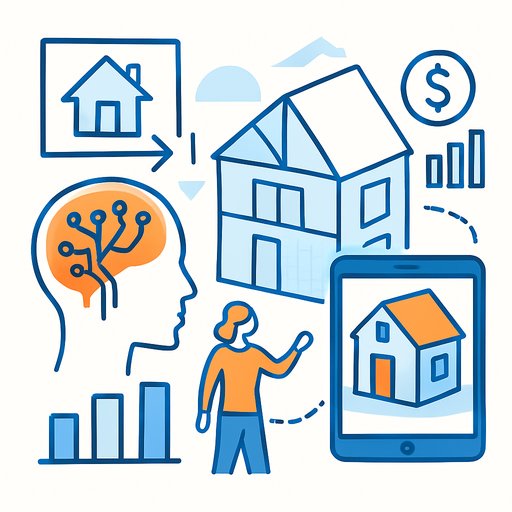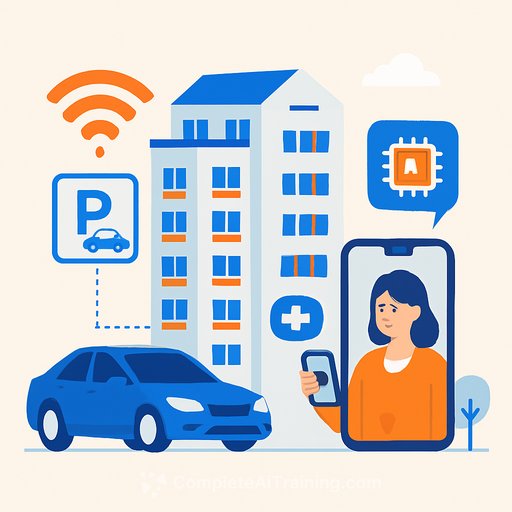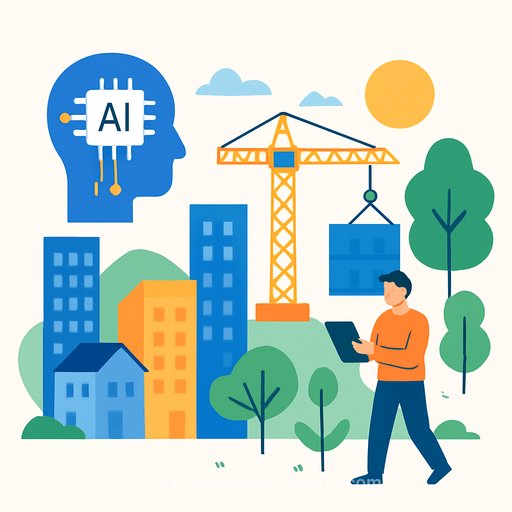AI Is Changing Renovations: Smarter Platforms, Faster Decisions, Better Outcomes
The renovation stack is getting an upgrade. AI platforms now handle design, costing, procurement, and ongoing maintenance in one workflow, cutting guesswork and delays while improving margins.
The Home Renovation Planning AI market is projected to reach USD 9.44 billion by 2033. That growth reflects a clear signal from owners, developers, and GCs: faster, data-backed decisions beat manual coordination and fragmented tools.
How Smart Renovation Platforms Actually Work
Generative design and visualization
Upload photos or plans, set constraints, and the system proposes layouts, finishes, and furniture options-then renders 3D views or AR so clients can "see it" before a single demo day. This removes rework and approval churn.
The difference from old workflows is simple: no static 2D drafts, fewer change orders, more informed sign-offs.
Costing, procurement, and scheduling
Machine learning models trained on material prices, labor rates, timelines, and historical outcomes produce line-item budgets and flag overruns early. The software suggests cost-effective substitutions without killing the design intent.
Computer vision pushes this further. Platforms like Kai can turn site photos and walkthrough videos into SKU-level material lists and pricing, speeding up takeoffs and cutting waste. That shortens RFQ cycles and locks in availability sooner.
Predictive maintenance and digital twins
After handover, sensors and IoT feeds help the AI monitor systems, detect drift, and schedule service before failures hit occupancy or NOI. Digital twins give teams a live model to test upgrades, energy savings, or layout changes before they touch the site.
Expect tighter lifecycle control, fewer surprises, and cleaner handoffs between construction and operations.
What This Means for Owners, Developers, and GCs
- Fewer change orders: Visual sign-off and constraint-aware design reduce late-stage reversals.
- Cleaner budgets: Probabilistic cost ranges and substitution logic keep projects within target.
- Faster procurement: Auto-generated SKUs and vendor-mapped materials cut cycles from weeks to days.
- Better sustainability: Material optimization and energy modeling guide low-waste, high-efficiency choices.
- Portfolio-level visibility: Comparable metrics across projects, vendors, and geographies.
The Technical Blueprint (Without the Jargon)
- Generative AI: Proposes layouts, finishes, and furniture based on constraints, style, and code requirements.
- Computer vision: Converts images and video into quantities, SKUs, and condition insights.
- Machine learning: Predicts cost, schedule risk, and change-order hotspots from past outcomes.
- NLP interfaces: Let teams ask questions in plain language and pull the right spec, RFI, or detail fast.
Who Wins: Tech Giants, AI Niche Players, and Fast-Moving incumbents
Specialist startups are carving out valuable lanes-AI design, predictive costing, AR/VR, and CV-driven takeoffs. Partnerships with retailers and distributors accelerate adoption by plugging into existing supply chains.
Incumbents like Yardi are embedding AI (e.g., Yardi Virtuoso) across property ops. That keeps them sticky with owners and asset managers while unlocking new cross-product data advantages.
Cloud-heavy players-Google, Microsoft, Amazon-have the compute, toolchains, and device footprints to power or acquire these platforms. Expect deeper connections with smart home devices, e-commerce, and logistics.
Wider Impact Across Real Estate
AI brings personalization and prediction to a sector that's long been manual and fragmented. The result: faster approvals, smarter allocations of capital, and projects that align with how people actually live and work.
There are trade-offs to manage: data privacy for property imagery and sensor feeds, bias in model training, and workforce shifts in design and PM roles. Clear governance and retraining plans matter as much as the tech.
What's Coming Next
- Full-stack integrations with IoT: Real-time feedback on energy, IAQ, and usage patterns informs the next upgrade cycle.
- Widespread digital twins: Live replicas to test scenarios, from finish swaps to MEP adjustments.
- AI-as-a-service for contractors: On-demand tools for takeoffs, scheduling, and QA without in-house data teams.
- Task-level robotics: AI-guided tools for layout, sanding, painting, and repetitive install work alongside crews.
Risks and Guardrails
- Data security: Treat floor plans, imagery, and sensor streams as sensitive. Use least-privilege access and encryption.
- Bias and fairness: Validate recommendations across property types, neighborhoods, and budgets.
- Model transparency: Keep a record of design and cost decisions for audits, lenders, and insurers.
- Standards: Push vendors to support common data formats for BIM, specs, and schedules.
For governance frameworks, see the NIST AI Risk Management Framework here.
Quick Wins You Can Execute This Quarter
- Pilot an AI design and costing tool on a mid-sized unit turn or a single asset reposition. Track change orders, budget variance, and procurement lead times.
- Feed historical projects into the model. Compare predicted vs. actuals to validate accuracy before scaling.
- Stand up a digital twin for one property with strong renovation plans in the next 6-12 months.
- Negotiate vendor integrations for SKUs and delivery windows to cut material slippage.
- Upskill PMs and supers on AI workflows and prompt-driven queries to speed RFIs and decisions. Explore role-based learning paths here.
Signals to Watch
- Faster partnerships between AI startups and large property/retail platforms.
- New guidance on data privacy and bias specific to property tech.
- More realistic generative design that respects codes, accessibility, and MEP constraints out of the box.
Bottom Line
AI for renovations moves from demo reels to deployment when it cuts budget variance, reduces rework, and tightens timelines. Teams that combine data, standards, and field-tested pilots will see the upside first.
The intelligent home-and smarter commercial stock-starts with practical wins: better design decisions, cleaner procurement, and maintenance that prevents downtime instead of reacting to it.
Note: This article is for informational purposes and reflects current developments in AI for real estate and construction.
Your membership also unlocks:





